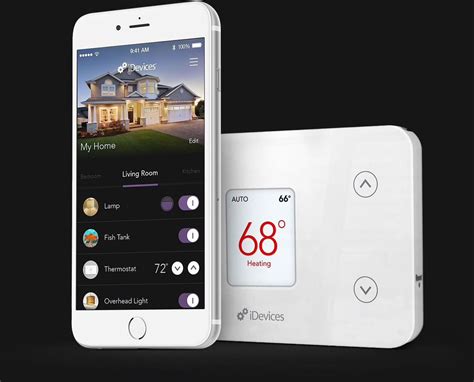As energy costs continue to rise, homeowners are searching for innovative ways to save money and reduce their carbon footprint. One effective solution gaining popularity is the smart thermostat. Not only do these devices offer advanced features for managing heating and cooling, but many state and local governments, as well as utility companies, also provide rebates to incentivize their installation. In this guide, we’ll explore how smart thermostat rebates work, how to qualify, and what steps to take to maximize your savings.
What is a Smart Thermostat?
A smart thermostat is a device that connects to your home’s heating and cooling system, allowing you to control the temperature remotely. These thermostats are equipped with Wi-Fi capabilities and can be accessed via smartphone apps or web interfaces. Common features include:
- Programmable schedules to optimize energy use.
- Learning capabilities that adapt to your lifestyle.
- Energy usage reports to help you monitor consumption.
- Integration with smart home systems for seamless control.
The Financial Benefits of Smart Thermostats
Investing in a smart thermostat can lead to significant savings on energy bills. According to the U.S. Department of Energy, homeowners can save an average of 10-12% on heating and cooling costs by using a programmable thermostat. Smart thermostats take this a step further, adjusting temperature settings based on your habits and preferences, ultimately maximizing your savings.
Understanding Smart Thermostat Rebates
Many government and utility organizations offer rebates to encourage homeowners to adopt energy-efficient technologies, including smart thermostats. Often, these rebates can substantially offset the initial cost of purchasing and installing a device. Rebates vary by location and can range from $50 to several hundred dollars, depending on the thermostat and the specific program.
How to Find Available Rebates
Finding available rebates in your area can be done through a few avenues:
- Utility Company Websites: Many utility companies list available rebates on their websites. Check your energy provider’s site for specific details.
- State Energy Office: Most states have an energy office that provides information on rebates for energy efficiency upgrades.
- Manufacturer Promotions: Some thermostat manufacturers offer direct rebates or incentives when purchasing their products.
Eligibility Requirements
Rebate programs typically have certain eligibility requirements, which may include:
- The thermostat must meet specific energy efficiency standards.
- Installation should be completed by a registered professional, depending on the organization.
- The purchase must be made within a designated timeframe, often aligned with the program’s fiscal year.
Steps to Claim Your Rebates
Once you’ve identified the rebates you qualify for, follow these steps to successfully claim them:
- Purchase the Smart Thermostat: Ensure that the model you select meets the energy efficiency criteria needed for the rebate.
- Installation: If required, hire a licensed professional to install the thermostat.
- Gather Documentation: Collect all necessary documentation, including proof of purchase, installation confirmation, and any specific forms required by the rebate program.
- Submit Your Application: Follow the instructions provided by the rebate program to submit your application. This can often be done online, via mail, or in person.
- Track Your Application: After submission, make sure to track the status of your rebate application to ensure it is processed in a timely fashion.
Choosing the Right Smart Thermostat
When selecting a smart thermostat, consider several factors:
- Compatibility: Ensure the thermostat is compatible with your HVAC system.
- Features: Look for features that fit your lifestyle, like geofencing, voice control, and high-accuracy sensors.
- User Reviews: Check reviews and ratings from other users to gauge reliability and performance.
Final Thoughts
A smart thermostat is a wise investment that can help you save on energy costs while contributing to environmental conservation. The added bonus of available rebates enhances the appeal of this technology, making it more accessible for homeowners. By understanding the rebate process and choosing the right thermostat for your needs, you can maximize your savings and enjoy a more efficient home.
FAQs
1. How much can I save with a smart thermostat?
On average, homeowners can save 10-12% on heating and cooling costs, translating to about $150 annually, depending on usage and heating specifics.
2. Are there any upfront costs for smart thermostat installation?
Yes, while rebates can significantly reduce costs, there may still be an initial investment required for the thermostat and possibly installation.
3. Can I install a smart thermostat myself?
Many smart thermostats are designed for easy DIY installation. However, some rebate programs may require professional installation to qualify for the rebate.
4. How long does it take to receive a rebate?
Rebate processing times can vary, but it typically takes anywhere from 4 to 8 weeks to receive a rebate after submission.
5. What happens if my rebate application is denied?
If your application is denied, you will typically receive a notification detailing the reason. You may have the option to appeal the decision or resubmit your application with the necessary corrections.
Download Rebates On Smart Thermostats
